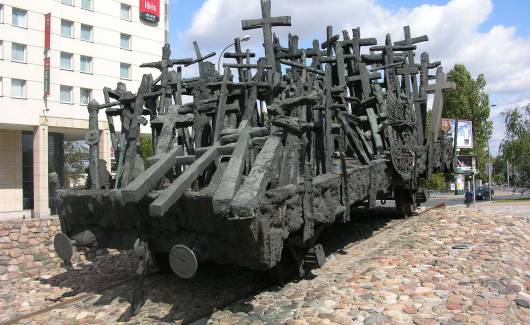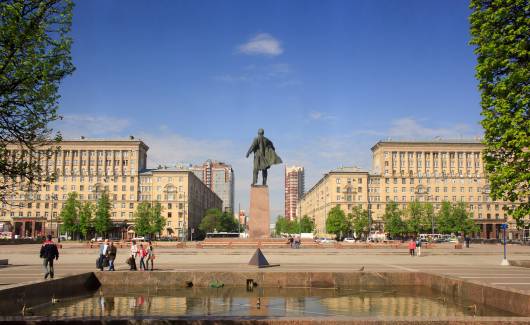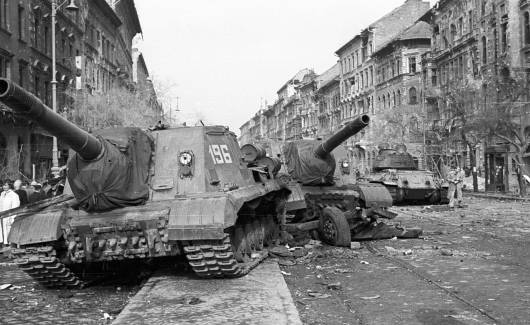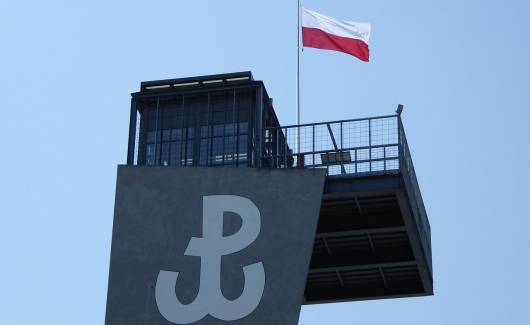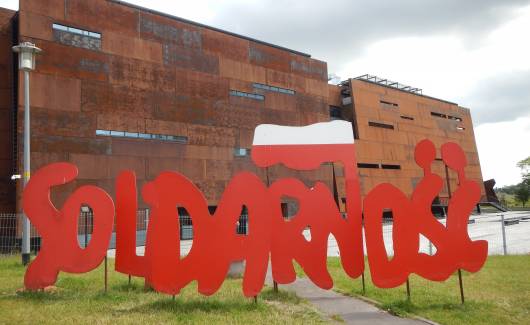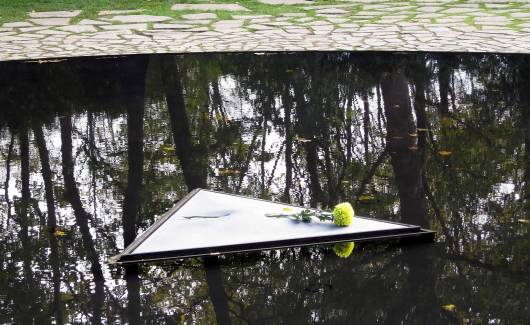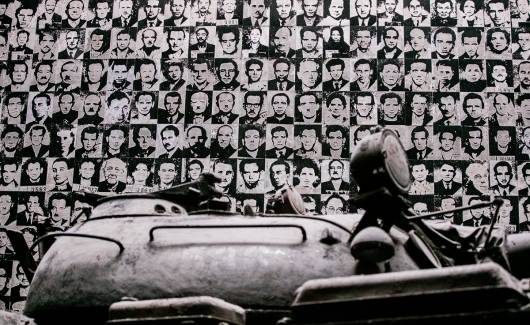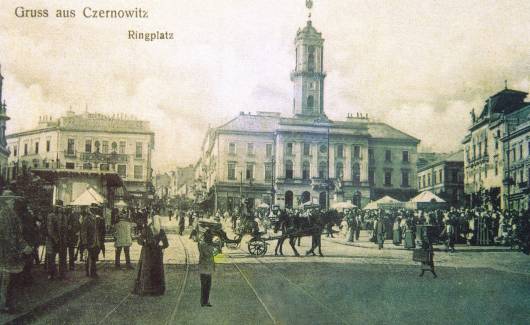Wszelka ludzka pamięć jest pamięcią jakiegoś podmiotu - jednostkowego bądź zbiorowego. W tym drugim przypadku utrwala się ona pod dwiema postaciami: w pamięci jednostek obciążonych obowiązkiem przechowywania jej i przekazywania, oraz w przedmiotach i w przestrzeni, o czym dalej.
Depozytariusze pamięci zbiorowej przekazują ją zazwyczaj pozostałym członkom zbiorowości w toku inicjacji i reaktualizują podczas okresowych obrzędów. W społeczeństwach nowożytnych odpowiednikiem inicjacji jest wychowanie w rodzinie i w szkole dopełnione innymi formami przysposabiania do samodzielnego życia, a okresowymi obrzędami są święta państwowe i kościelne, i obchody rocznicowe. Pamięć zbiorowa nadbudowuje się nad pamięcią jednostek i wywiera na nie wpływ zwrotny: ujmuje je we wspólne ramy, narzuca im wspólne kryteria, acz tylko w ograniczonym zakresie, i wpaja im pewne wspólne treści. Ale samo trwanie pamięci zbiorowej ma za konieczny warunek pamięć jednostek. Gdyby poraziła je amnezja bądź zgładziła zaraza, zostałyby po niej tylko nieme przedmioty i puste miejsca.
Pamięć i jej miejsca
Wszelka spontaniczna ludzka pamięć, czy to jednostek, czy zbiorowości, jest zdarzeniowa, jakościowa, oceniająca, wybiórcza i egocentryczna. Jej zawartość zależy przecież od uposażenia podmiotu oraz od jego wrażliwości, nastawienia, oczekiwań i uprzedzeń, a rejestruje ona zwłaszcza to, co dla jej podmiotu uderzające, co odcina się od tła, wyłamuje z rutyny, dziwi, zaskakuje - czyli właśnie zdarzenia. Przy czym wybiera je ona i hierarchizuje ze względu na ich ważność dla podmiotu i zachowuje je w tej postaci, w jakiej były przezeń przeżywane, z całą otoczką uczuć, jakie w nim budziły, gdy je pierwotnie postrzegał.
Splatają się tu nierozłącznie trzy wymiary pamięci, które tylko analiza pozwala oddzielić od siebie. Wymiar poznawczy, gdyż pretenduje ona do wiernego odtwarzania minionych zdarzeń, ich uczestników i okoliczności, w jakich zaistniały, czyli do powiadamiania zgodnie z prawdą o tym, co się niegdyś dokonało. Wymiar emocjonalny, gdyż odtwarzanie minionych zdarzeń ożywia zarazem uczucia, jakie im towarzyszyły, i może nawet, w sprzyjających temu warunkach, wprawić ponownie w stan, jaki był za sprawą tych zdarzeń przeżywany. Wymiar egzystencjalny, gdyż zdarzenia zapamiętane tym właśnie różnią się od aktualnie postrzeganych czy poznawanych na inne sposoby, że są w pewien szczególny sposób związane z pamiętającym je podmiotem: uobecniają mu się jako przynależne jego osobowości, tej samej wtedy, gdy stykała się z nimi po raz pierwszy i teraz, gdy je sobie przypomina, i uświadamiają mu przeto jej trwanie, zmienianie się w czasie bez zerwania ciągłości.
Te trzy wymiary pamięci zwracają się odpowiednio ku przeszłości, ku teraźniejszości i ku przyszłości. Ku przeszłości, jako że pamięć powiadamia o tym, co kiedyś było przedmiotem postrzeżenia czy przeżycia, ale co teraz już nie może nim być w swej oryginalnej postaci. Ku teraźniejszości, ponieważ uczucia jakie ewokuje są doznawane obecnie, w toku przypominania sobie minionych zdarzeń. Ku przyszłości wreszcie, albowiem tożsamość, którą pozwala uprzytomnić sobie, jest nie tylko czymś już danym lecz nadto projektem, otwarciem na coraz to nowe sytuacje, i gotowością zmieniania się, nie zrywając wszelako ciągłości z sobą teraźniejszym i przeszłym. Ale choć pamięć zawiera w sobie i przeżycia, i antycypacje, to konstytuuje ją i wyróżnia jako pamięć właśnie zdolność zatrzymywania i zachowywania czegoś, co zdarzyło się i przeminęło, i przywracania tego świadomości. Toteż wymiar poznawczy pamięci odgrywa zasadniczą rolę zarówno w życiu psychicznym jednostek, jak i w kulturze społeczeństw.
Pamięć utrzymuje szczególnie bliskie stosunki z przestrzenią zarówno fizyczną, jak społeczną, semiotyczną i myślową. Dotyczy to pamięci jednostkowej, zlokalizowanej w mózgu każdego osobnika, a zarazem na zewnątrz: w zapisach, obrazach, znakach i innych pomocach mnemotechnicznych. Dotyczy to chyba w jeszcze większym stopniu pamięci zbiorowej przechowywanej przecież nie tylko przez jednostki, ale również, w postaci uprzedmiotowionej, przez instytucje, które są jej depozytariuszami, bądź dlatego że powołano je w tym celu, jak muzea, biblioteki, archiwa, służby ochrony zabytków, komitety obchodów rocznicowych, bądź dlatego, że zajmują się tym w ramach swej właściwej działalności. Media, Kościoły, władze terenowe i urzędy, instancje oświaty, nauki i kultury, wojsko, partie polityczne, stowarzyszenia, organizacje międzynarodowe zależnie od swych zainteresowań i kompetencji nadzorują cmentarze, finansują wykopaliska archeologiczne, zabiegi konserwatorskie, badania historyków i etnografów, decydują o nazwach ulic, jednostek wojskowych, statków i okrętów, szkół i uczelni, o zachowaniu albo o zniszczeniu dawnej zabudowy, o pomnikach i tablicach pamiątkowych, o postaciach i zdarzeniach godnych uwzględnienia w podręcznikach szkolnych, upowszechnienia w audycjach, widowiskach, wydawnictwach wielonakładowych, uczczenia wzmiankami w kalendarzach lub obrzędami o zasięgu lokalnym, narodowym, europejskim czy, przynajmniej w zamierzeniu, powszechnym.
Wszystkie te instytucje mają do czynienia z pamięcią zbiorową urzeczowioną, niekiedy ucieleśnioną, a tym samym – wbudowaną w przestrzeń zarazem fizyczną, społeczną i semiotyczną, którą wypełnia ona dodatkowymi znaczeniami i do której wprowadza przeto odniesienia do przeszłości, uwidacznia ją, udostępnia spojrzeniu, pozwala przywołać i uobecnić. Przestrzeń ta jest więc również przestrzenią pamięci i z tego, acz nie tylko z tego tytułu - przedmiotem działań polityka, który pragnąc kształtować przyszłość musi odnieść ją do zapamiętanej przeszłości, i badan historyka, który, by poznać przeszłość, musi krytycznie przeglądać warstwy znaczeń, w jakie wyposażano ją z biegiem czasu.
Jak przestrzeń społeczna, tak i przestrzeń pamięci nie jest bynajmniej jednorodna. Zawiera miejsca, które budzą skojarzenia z przeszłością tylko w rodzinach czy w społecznościach lokalnych. I takie, które - na ogół za sprawą długotrwałego i skutecznego działania odpowiednich instytucji - są wybitnie nasycone wspomnieniami wspólnymi dużym grupom zawodowym czy terytorialnym, klasom społecznym, całym narodom, wyznawcom jakiejś religii czy ideologii, co nie znaczy, by znał je każdy, kto do nich należy, ale co znaczy, że podziela je większość, a zwłaszcza ci, którzy daną zbiorowość w jej mniemaniu reprezentują. Wspomnienia te pielęgnuje się, wpaja jednostkom na różne sposoby, utrwala w przedmiotach i aktualizuje w obrzędach. A miejsca, w których one się skupiają - to z reguły okolice, gdzie rzekomo coś się niegdyś działo, albo daty, kiedy coś się wydarzyło ważnego w jej mniemaniu dla zbiorowości, czy te, gdzie znajdują się twory przyrody bądź człowieka, które budziły i nadal budzą zbiorowe emocje, lub uważane są za symbole więzi z poprzednimi pokoleniami, lub za relikwie osobistości czy pozostałości zdarzeń utrwalonych w przekazie ustnym, w obrazach, pismach, zachowaniach i uznanych za konstytutywne dla tożsamości grupy, klasy, narodu czy ponadnarodowego zrzeszenia religijnego bądź ideowego. To również nośniki znaczeń, które długo były, a często są nadal przedmiotem żarliwego kultu bądź zajadłych sporów, i które weszły z tego względu do świadomości potocznej. Właśnie takie miejsca materialne i wyobrażone, gdzie wspomnienia zbiorowe występują w szczególnym stężeniu określa się mianem miejsc pamięci.
Każde miejsce pamięci ma własną historię. Ale każde odznacza się tym, że w ciągu dziesięcioleci, niekiedy nawet wieków, nawarstwiały się wokół niego wierzenia i nawyki, że mówiono o nim i pisano, że powielano jego wizerunek, że nawiązywano z nim kontakt wzrokowy na różne sposoby zależne od jego postaci, że jego losy budziły wyrażany publicznie niepokój i wymianę zdań, że jedni otaczali je opieką i brali pod ochronę, a inni usiłowali je zniszczyć. Zabiegi, które wyposażyły dane miejsce w znaczenia i nadały mu z biegiem czasu rangę miejsca pamięci, podejmowano niekiedy z rozmysłem, by osiągnąć taki właśnie efekt, jak wtedy, gdy sięgała po nie władza w ramach polityki mającej na celu jej legitymizację: włączenie w ciąg postaci i instytucji uznanych od dawna przez miarodajną opinię za godne odtworzenia lub naśladowania. Ale przeważnie zabiegów takich dokonywano spontanicznie; tak się po prostu działo, za sprawą okoliczności, że tu a nie gdzie indziej skupiały się uczucia i wspomnienia kultywowane pierwotnie przez jednostki, rodziny czy małe grupy i stopniowo przyswajane sobie przez coraz szersze kręgi, aż ostatecznie stawały się własnością ogółu i zyskiwały nawet oficjalną konsekrację. Te spontaniczne zabiegi okazywały się z reguły bardziej skuteczne niż rozmyślne działania władz. Jakoż nie zdarzyło się bodaj, by odgórna decyzja powołała miejsce pamięci, które by pozostało żywotne jeszcze długo po tym, jak jej autorów odsunięto od władzy. Znane są natomiast liczne miejsca pamięci, które powstały i utrzymały się bez poparcia władz, a często nawet wbrew ich woli. Pamięć umie być znacznie bardziej odporna na wpływy zewnętrzne niż jest się skłonnym przypuszczać. Toteż „polityki historyczne”, które usiłują narzucić obraz przeszłości sprzeczny z tym, jaki zachował się w zbiorowej pamięci, kończą się z reguły, prędzej czy później, zupełnym fiaskiem.
Właśnie dlatego, że miejsca pamięci są przeważnie emanacją społeczeństwa, stanowią one, choć w różnym stopniu, jego symboliczną własność, wspólne dziedzictwo. Wyraża się to w ochronie, jakiej podlegają ze strony powołanych w tym celu instytucji, a jeszcze bardziej w wierze wpajanej jednostkom niekiedy tylko przez wychowanie w rodzinie, a zazwyczaj również przez system oświatowy, media, Kościoły, stowarzyszenia i urzędy - wierze, wedle której to właśnie miejsca pamięci konstytuują społeczeństwo jako zbiorowy podmiot, gdyż przypominając jego przeszłość, zobowiązują do przeniesienia jej w czas przyszły. Wiara ta czyni z miejsc pamięci nośniki zbiorowej tożsamości, nie jedyne wprawdzie ale szczególnie ważne dla społeczeństwa, które się w nich rozpoznaje. Stąd wyjątkowe uczulenie na losy tych miejsc pamięci, które w wyniku wojen, przemieszczeń ludności czy przesunięcia granic znalazły się pod władzą innego państwa. Bedzie jeszcze o tym mowa.
Konflikty pamięci
W określonym przedziale czasu topografia pamięci zbiorowej jest wypadkową wielu czynników. Tego, co się rzeczywiście wydarzyło w przeszłości. Zasięgu oddziaływania i trwałości skutków poszczególnych zdarzeń czy takich procesów, jak wojny, rewolucje, przewroty, epidemie, głody, eksterminacje, masowe przesiedlenia i inne kataklizmy. Odbioru tych zdarzeń i procesów przez współczesnych zależnego z kolei od podłoża, na jakie trafiały: od instytucji, nastrojów społecznych, wierzeń zbiorowych. Znaczeń, jakie minionym zdarzeniom i procesom nadawały kolejne pokolenia: przypisywanej im wagi, ciągów przyczynowo-skutkowych, w jakie je włączano, uznawania ich za zamknięte w czasie przeszłym dokonanym albo, przeciwnie, za nadal czynne. Stanu teraźniejszego właściwego danej zbiorowości: tego, czy znajduje się ona w fazie wzrostu czy schyłku, ekspansji czy regresu, co ma wpływ na oczekiwania zbiorowe, które kształtują wyobrażenia przeszłości: rozkład akcentów, zabarwienie, wybór postaci i obsadzenie jednych w roli bohaterów, innych – w roli złoczyńców. Nie jest to zapewne lista wyczerpująca, ale daje jakieś pojęcie o złożoności rozpatrywanych tu zjawisk i prowadzi do wniosku, że topografia pamięci zbiorowej zmienia się w czasie w następstwie zmiany czynników, które ją kształtują. Obecne miejsca pamięci mogą przeto stracić na znaczeniu, podczas gdy tę rangę zyskają inne.
Przede wszystkim jednak topografia pamięci zbiorowej zmienia się zależnie od podmiotu pamięci. Jest inna w przypadku każdej grupy i każdego zrzeszenia, w szczególności zaś - każdego narodu europejskiego i w jego obrębie – każdej z kategorii społecznych, z jakich on się składa. Przy czym o ile pamięć małych grup bywa jednolita, gdy wywierają one na swych członków presję tak silną, że upodobnia ona ich wspomnienia i nadaje im zbieżną wymowę, o tyle pamięć dużych zbiorowości jest zawsze rozdarta, często do tego stopnia, że można i trzeba zapytać, czy w ich przypadku mamy zaiste do czynienia z jedną podzieloną pamięcią, czy też jest ona tylko złudzeniem, za którym kryje się wielość pamięci niezgodnych ze sobą. Wbrew pozorom nie jest to pytanie czysto teoretyczne. Odpowiedź na nie bowiem jest określeniem się wobec wspólnej pamięci, odrzuceniem jej bądź przyjęciem, a tym samym ustosunkowaniem się do innych pamięci, z którymi miałaby ona łączyć tę, którą uważamy za własną, uznaniem tego, co je różni, za dopuszczalną odrębność albo za przeciwieństwo tak jaskrawe, że musi ono doprowadzić do starcia zakończonego zwycięstwem jednej ze stron. Jest to więc odpowiedź polityczna, jak zarazem teoretyczne i polityczne jest pytanie o podzieloną wspólną pamięć czy to poszczególnego narodu czy Europy.
Pamięć każdego narodu europejskiego – a chyba i innych – obejmuje pamięci od siebie różne, a nawet z sobą skłócone, bo każdy przeżył często krwawe konflikty wewnętrzne: wojny religijne, bunty chłopskie, rewolucje, wojny domowe, wystąpienia robotnicze, zmiany ustrojowe, starcia polityczne. Konflikty takie niekiedy kończą się kompromisem. Przeważnie jednak każdy z nich zostawia po sobie zwycięzców i zwyciężonych, którzy pamiętają co innego, a nawet te same wydarzenia pamiętają inaczej i oceniają rozbieżnie, i którzy przekazują swe wspomnienia następnym pokoleniom. Gwałtowny konflikt nigdy nie ginie wraz z swymi protagonistami, lecz pozostaje obecny w konflikcie pamięci. W tej bowiem mierze, w jakiej potomkowie poczuwają się do więzi z przodkami, przejmują oni odziedziczone wspomnienia w przekonaniu, że są prawdziwe i włączają je we własną tożsamość, jak i kultywują odziedziczone miejsca pamięci od grobów rodzinnych poczynając. Z upływem czasu każdy konflikt pamięci wygasa; by do tego doszło, trzeba jednak zazwyczaj dziesięcioleci i sprzyjających warunków, w szczególności unikania wszystkiego, co go może ponownie rozjątrzyć. Pamięć Żydów polskich nie byłaby tak ostro skłócona z pamięcią pewnych odłamów polskiej opinii, gdyby nie marzec 1968 roku i tolerowanie antysemityzmu w Trzeciej Rzeczypospolitej. O tym, czy można znaleźć rozwiązanie dla konfliktu pamięci, gdy jest podrażniony, będzie jeszcze mowa. Teraz wystarczy zauważyć, że próby narzucania wszystkimi środkami w dyspozycji państwa pamięci jednej ze stron konfliktu jako pamięci narodowej, dają z reguły skutki odwrotne od zamierzonych, gdyż tylko podsycają konflikt, który rzekomo chciały zgasić.
Uwagi te stosują się z odpowiednimi zmianami również do pamięci europejskiej. Jest ona przecież kwestionowana przez tych wszystkich, dla których naród jest najwyższą formą społeczeństwa ludzkiego jeśli nie w ogóle, to przynajmniej w porządku doczesnym. Ale nawet gdy uznaje się pamięć europejską, a wraz z nią Europę, za realną, pytanie o jej stosunek do pamięci narodowych pozostaje otwarte. Czy jest ona tylko ich pochodna, czy również tworem sui generis? Nie tu miejsce na uzasadnianie odpowiedzi. Wystarczy zauważyć, że jest to pytanie zarazem historyczne i polityczne, i stwierdzić bez dowodu, że wspólna pamięć europejska nie daje się sprowadzić do wielości pamięci narodowych, choć zarazem pozostaje pod wpływem ich konfliktów.
A tych nie brak. Albowiem pamięci narodów są często skłócone ze sobą; dotyczy to zwłaszcza tych, które z sobą sąsiadowały lub sąsiadują. Przy czym każda pamięć narodowa, choć wewnętrznie rozdarta, występuje zazwyczaj jako jedność, gdy przeciwstawia się innym. To, ze każdy naród ma sobie tylko właściwe miejsca pamięci, nie musi samo przez się być źródłem konfliktów. Wojny, które zapełniają przeszłość, pozostawiły jednak zwycięzców i zwyciężonych, spowodowały nieszczęścia ludzkie, zniszczenia i grabież dóbr kultury, straty materialne, przemieszczenia granic, przesiedlenia ludności. W ich wyniku zdarza się, że te same przedmioty, terytoria, aglomeracje miejskie są rewindykowane przez różne narody jako ich miejsca pamięci; jeśli każdy z nich rości sobie pretensje do wyłączności, a pamięć, jaką kultywuje, jest głównie pamięcią krzywd doznanych od sąsiada i rywala, konflikt pamięci okazuje się nieuchronny. Może on niekiedy przybrać formy ostre; bywa tak zwłaszcza wtedy, gdy pamięć staje się po obu stronach granicy przedmiotem manipulacji politycznych. Te bowiem są w stanie zamienić konflikt pamięci w konflikt realny, ożywiając u jednych i u drugich uspokojone, jak by się zdawało, poczucie życiowego zagrożenia i uczucia wzajemnej wrogości, i powodując przeto odtworzenie dawnej wojny w nowej postaci, równie okrutnej, co jej pierwowzór. Wystarczy przypomnieć rozpad Jugosławii, gdzie konflikt pamięci starannie pielęgnowany i odpowiednio zaogniony zaowocował zbrodniami przeciw ludzkości.
Konflikty pamięci mają też inne powody. Dzieje narodów europejskich są powiązane tak bardzo, że każdy z nich jest tylko składnikiem szerszej całości. Wiele postaci, wydarzeń i procesów jest wspólnych wielu narodom; niektóre są nawet wspólne wszystkim. Ale te wspólne składniki pamięci są bardzo często opatrywane przeciwnymi znakami. Bohaterowie jednego narodu bywaja wyklinani przez inne. Co tu czci się jako zwycięstwo, tam opłakuje się jako klęskę. Ci mają siebie wyłącznie za ofiary, tamci widzą w nich gnębicieli, jeśli nie oprawców. Po tamtej stronie granicy mowa o bezprawnych wysiedleniach; po tej – o realizacji uchwał międzynarodowych. Co jedni wspominają jako katastrofę narodową, dla innych jest wyzwoleniem od obcej przemocy. Listę tę łatwo wydłużyć. Również i takie konflikty pamięci mogą być i są politycznie instrumentalizowane przez siły, które próbują je wykorzystać dla uzasadnienia roszczeń materialnych czy symbolicznych, bądź też, co znacznie groźniejsze, dla ujednolicenia własnej pamięci narodowej i narzucenia jej w tej postaci współobywatelom. Pamięciowy konflikt zewnętrzny ma wtedy posłużyć stłumieniu takiegoż konfliktu wewnętrznego przez wykreowanie wroga, któremu trzeba przeciwstawić siłę, zwartość i gotowość do walki. Wszystkie ruchy autorytarne i totalitarne używały tego rodzaju socjotechniki, by zapewnić sobie poparcie.
Co robić z konfliktami pamięci, które nadal zachowują żywotność? Czy można znaleźć dla nich takie rozwiązania, które by nie odgrywały źródłowego konfliktu, choćby w postaci znacznie złagodzonej, unikając wszelako zapomnienia o nim i rzutowania w przeszłość fikcyjnej zgody? Rozwiązania, które by pozwalały każdemu protagoniście pozostać sobą, czyli zachować własną pamięć, a zarazem ułożyć współżycie ze stroną przeciwną na gruncie zgodnego uznania odrębności skłóconych pamięci, co by uniemożliwiło, a przynajmniej utrudniło przerodzenie się różnic miedzy nimi w gwałtowny spór? Nim odpowiem, zauważę że samo postawienie takiego pytania jest pochodne wobec politycznej decyzji wygaszenia konfliktu pamięci, a przynajmniej poniechania działań, które by ten konflikt podsycały i pogarszały przeto i tak już złe stosunki między stronami. Taka polityczna decyzja nie jest bynajmniej oczywista. Przed chwilą była przecież mowa o siłach, których perspektywa rozwiązania konfliktu do przyjęcia dla wszystkich protagonistów po prostu nie interesuje albo interesuje o tyle tylko, o ile uważają za konieczne ją zwalczać, bo radykalnie przeciwstawiają swoich obcym, przyjaciół – wrogom, ujmując swe stosunki z nosicielami innych pamięci w kategorie konfrontacji i dążąc do narzucenia przemocą własnego stanowiska. Dopiero podjęcie politycznej, powtarzam, decyzji traktowania drugiej strony nie jako przeciwnika lecz jako partnera w szukaniu porozumienia i założenie tym samym, że jest ono możliwe, czyni sensownym zastanawianie się nad tym, jak najlepiej tę możliwość urzeczywistnić.
Trzy wymiary konfliktów pamięci
Konflikt pamięci jest dlatego tak trudny do rozwiązania, że wszelka pamięć przypisuje sobie wyłączność wiedzy o tym, co się rzeczywiście wydarzyło. Jeśli zatem dwie pamięci mają na jakiś temat zdania różne i nie dające się pogodzić, sytuacja zdaje się beznadziejna. Tak jednak nie jest, gdyż obie strony mogą zgodnie odwołać się do jakiejś instancji, której autorytet pospołu uznają, i przystać na jej arbitraż. Tak postępowano przez długie wieki. W dobie nowożytnej odkryto jednak, że spory o przeszłość w ich wymiarze poznawczym można rozstrzygać całkiem inaczej: opuszczając teren pamięci, by skorzystać z usług historii. Historia bowiem w jej nowożytnym rozumieniu nie ma być zapisem pamięci, czym była w ciągu większej części swych dziejów. I być nim nie musi, ponieważ jest w stanie wyjść poza uobecnianie przeszłości dzięki przywoływaniu wspomnień, by poznawać ją w sposób całkiem od pamięci niezależny: za pośrednictwem źródeł czyli wszelkiego rodzaju pozostałości, które przetrwały do naszych czasów i które można badać tak, by wyprowadzić z przysługujących im cech wnioski o tym, kiedy, za czyją sprawą i w jakich okolicznościach powstały w swym kształcie pierwotnym i o zmianach, jakim później podlegały.
Nie mogę tu wchodzić w szczegóły, zresztą wielokrotnie przedstawiane. Wystarczy stwierdzić, że wiedza historyczna o przeszłości przynosi informacje pozostające poza zasięgiem pamięci, co najlepiej świadczy o niezależności pierwszej od drugiej. Ale to nie wyczerpuje sprawy wzajemnych stosunków historii i pamięci. Równie istotne dla historii jest bowiem ukazywanie przeszłości z perspektywy, która nie jest perspektywą pamięci i różni się od niej zasadniczo tym, że wyklucza utożsamianie się historyka z postaciami z przeszłości, zwłaszcza zaś z takim czy innym protagonistą minionych konfliktów. Historyk jako historyk nie ma brać czyjejkolwiek strony. Ma brać wyłącznie stronę historii jako gałęzi wiedzy i dyscypliny badawczej. Jego obowiązkiem, innymi słowy, jest utożsamiać się całkowicie i bez reszty z idealnym podmiotem norm nierozłącznie etycznych i epistemologicznych, które regulują jego stosunki z własnym środowiskiem zawodowym i z szerszym otoczeniem, a zarazem ukierunkowują jego zabiegi badawcze tak, by mogły one sprostać krytyce innych historyków i by ich wyniki okazały się przeto do przyjęcia dla nich, a za nimi – dla szerszych kręgów publiczności; by zyskały, innymi słowy, ważność powszechną. Zakłada to pełną zgodność poglądów środowiska historyków na zasady postępowania i na kryteria oceny stosowanych zabiegów, a więc również ważności pozyskanej dzięki nim wiedzy.
W rzeczywistości pełna zgodność w tych sprawach nigdy nie zachodzi, a odstępstwa od idealnego wzorca są bardzo liczne i nie trzeba ich daleko szukać. Zostawmy na uboczu nieporadności warsztatowe, koncepcyjne i pisarskie. Groźniejsze od nich jest sprzeniewierzanie się niektórych historyków ich zawodowym obowiązkom i wprowadzanie opinii w błąd, gdy podają oni pod nazwą historii coś, co jest w rzeczywistości zapisem pamięci. Nie znaczy to bynajmniej, jakoby historykom nie wolno było jej rejestrować. Przeciwnie. Jedną z ich ról i to bardzo ważną jest tworzenie źródeł, utrwalając wspomnienia osób, które ze względów psychologicznych czy społecznych same nie są w stanie tego zrobić. Czym innym jednak jest zachowywanie pamięci, a czym innym podawanie jej jako historii i nadawanie przeto ważności powszechnej obrazowi przeszłości, który jest nieuchronnie częściowy i stronniczy. Zdarza się to szczególnie często badaczom dziejów najnowszych, bardziej niż inni wystawionym na naciski instytucji politycznych i mediów, które dysponują środkami perswazji i które domagają się od nich, by utożsamiali się z jedną ze stron minionych konfliktów i przedstawiali je z jej perspektywy. Nie usprawiedliwia to ulegania takim naciskom, bo niektórzy umieją przecież im się oprzeć. Ale ilustruje regułę ogólną, że historii jest tym trudniej wyzwolić się w pełni od pamięci, im bardziej ta ostatnia jest żywa i im bardziej wydarzenia, które przywołuje pozostają bolesne z uwagi na ich charakter i trwające nadal skutki. A tak dzieje się z natury rzeczy zwłaszcza w przypadku konfliktów o miejsca pamięci.
Wszystko to nie przekreśla jednak faktu, że rozstrzygać konflikty pamięci w ich wymiarze poznawczym można tylko przenosząc je na teren historii. Wymaga to od obu stron decyzji politycznej: wstrzymania wszelkich poczynań, które grożą zaognieniem sporu, i pozostawienia historykom pełnej swobody szukania odpowiedzi na pytanie o to, co się zdarzyło, z równoczesnym wyrażeniem gotowości przyjęcia jej, gdy zostanie wypracowana. Dla historyków nie jest to bynajmniej zadanie łatwe, choćby dlatego, że po obu stronach ciąży na nich pamięć. Ale nawet gdyby historycy doszli do porozumienia, a politycy byli skłonni je zaaprobować, dotyczyłoby ono tylko tego, co daje się ustalić za pośrednictwem źródeł, co może, innymi słowy, być przedmiotem poznania. A przecież w grę wchodzą również dwa inne wymiary pamięci, emocjonalny i egzystencjalny, które pozostają poza zakresem kompetencji historyków. Jak pogodzić nie tylko poglądy na to, co się kiedyś stało, ale nadto uczucia i tożsamości?
Wymaga to ujęcia źródłowego konfliktu z perspektywy już nie historycznej lecz hermeneutycznej i dostrzeżenia w nim tragedii. Bardziej od historyków powołani są do tego pisarze i artyści zdolni ukazywać minione konflikty, przez pryzmat losów jednostek, nie cofając się przed opisami, na które historykowi, skrępowanemu wymogami swego zawodu, nie wolno sobie pozwolić. Zdolni wczuwać się w protagonistów i odtwarzać ich motywacje, próbując zrozumieć je bez udzielania im aprobaty. Zdolni apelować do przeżyć odbiorcy, budzić w nim poczucie wspólnoty z przedstawianymi postaciami, a zarazem całkowitej wobec nich obcości, wyzwalać emocje, które skłaniają do zmiany spojrzenia. Uczestnicy konfliktu po obu stronach ukazują się wtedy jako postaci tragiczne, gdyż poruszane przez bogów, których same powołały do istnienia, a którzy, wbrew żywionym przez nie oczekiwaniom, wiodą je do nieuchronnej zguby: przez wierzenia zbiorowe, religie czy ideologie, którym dały sobą powodować, nie bacząc na skutki i nie cofając się w imię realizacji ich haseł przed najokrutniejszymi zbrodniami. Ale zaślepienie postaci tragicznych nie jest okolicznością łagodząca. Byli przecież tacy, którzy nie ulegli religiom czy ideologiom i tacy, którzy choć przyswoili je sobie, nie posunęli się aż do popełniania przestępstw, by wcielić je w życie. Ci, którzy doszli do ostateczności, mieli jakąś, choćby bardzo ograniczoną, wolność wyboru, co sprawia, że stosują się do nich kategorie odpowiedzialności, winy i kary.
Uznanie źródłowego konfliktu za tragedię prowadzi do odrzucenia manichejskiej jego interpretacji jako walki dobra ze złem i do rezygnacji z ujęcia, wedle którego po naszej stronie były tylko ofiary, a po stronie nam przeciwnej - tylko kaci. Nie wynika z tego, że po obu były same ofiary. Wynika natomiast, że i tu, i tam były ofiary i kaci, ofiary, które niekiedy stawały się katami, i kaci czy ich wspólnicy, którzy padli ofiarą własnych zbrodni, przy czym mamy tu do czynienia z gradacją: od mieszaniny dobra ze złem do zła w postaci niemal krystalicznie czystej. Taka zmiana rozumienia źródłowego konfliktu ma ważne skutki dla uczuć, jakie on po sobie pozostawił. Nienawiść i chęć zemsty okazują się z perspektywy tragedii wytworami sił, które do konfliktu doprowadziły, a uleganie im grozi zejściem, choćby w myślach i słowach, do poziomu jego najbardziej odrażających uczestników. Skłania to do oczyszczenia się czyli do edukacji uczuć, która zastąpi litość dla swoich i nienawiść do obcych współczuciem ze wszystkimi z wyjątkiem tych, którzy przekroczyli granice człowieczeństwa. I zdolnością przebaczania. Tu kończą się kompetencje pisarzy i artystów. Prawo głosu przysługuje natomiast świeckim i duchownym autorytetom moralnym. Jednym z znakomitych przykładów aktu przebaczenia jest pamiętny list biskupów polskich do biskupów niemieckich. Szkoda tylko, że podobny nigdy, jeśli się nie mylę, nie został wystosowany do prawosławnych biskupów rosyjskich i ukraińskich.
Miejsca pamięci pozostają, jak widzieliśmy, ściśle związane z poczuciem zbiorowej tożsamości. Fakt, że niektóre należą równocześnie do różnych zbiorowości – np. narodów czy wyznań – niczego tu nie zmienia. Nadaje jednak wyjątkowo groźną wymowę zawłaszczaniu wspólnych miejsc pamięci na swój wyłączny użytek przez jednego z współwłaścicieli, co musi być odbierane przez pozostałych jako pozbawianie każdego z nich jakiejś części samego siebie. I nadaje jeszcze groźniejszą wymowę niszczeniu ich lub przeinaczaniu, postrzeganym nieuchronnie jako chęć zatarcia śladów przebywania na danym terenie czy działania w danej dziedzinie zbiorowości innej niż ta, do której one obecnie należą. Jako symboliczna eksterminacja. Toteż spór o miejsca pamięci ma nieuchronnie wymiar egzystencjalny, a jego rozstrzygnięcie nie może być trwałe dopóty, dopóki wszystkie zaangażowane weń tożsamości zbiorowe nie otrzymają zadośćuczynienia. W praktyce znaczy to, że obowiązkiem państwa, w którego granicach znajdują się miejsca pamięci innych zbiorowości, jest nie tylko otaczanie ich opieką i ochroną, czego, my, Polacy nie robiliśmy bardzo długo w stosunku do pamiątek niemieckich i żydowskich rozsianych na naszej ziemi. Jego obowiązkiem jest nadto umożliwianie zainteresowanym dostępu do nich i odbywania obrzędów komemoracyjnych zgodnie z ich wierzeniami i przekonaniami. Jest to koniecznym warunkiem zastąpienia konfliktu wokół miejsc pamięci obustronnym szukaniem zasad przyszłego współżycia.
Rozwiązania takie, choć wygaszają konflikt, nie mogą jednak uniemożliwić, a nawet poważnie utrudnić ponownego rozpalenia go, o ile nie dokona się taka przebudowa tożsamości zbiorowej stron, która usunie z zespołu konstytutywnych składników każdej z nich wrogość wobec drugiej strony. Tu na scenę muszą wejść wychowawcy w najszerszym słowa tego rozumieniu, które obejmuje nie tylko nauczycieli wszystkich szczebli, ale również polityków, duchownych, dziennikarzy i ludzi mediów. Mogą oni i powinni korzystać z prac historyków oraz z literatury i sztuki, choć poprawne ustalenie faktów i tragiczne rozumienie minionych konfliktów to dla nich nie cele, ale środki powalające dopełnić edukację uczuć takim kształtowaniem tożsamości zbiorowej, które zastąpi poczucie własnej niewinności świadomością zasług i win, poczucie wyłącznej słuszności przekonaniem, że racje często bywają podzielone, a poczucie zagrożenia przez obcych nastawieniem na trwałe współistnienie. I które będzie rewidowało wyobrażenia o własnej przeszłości z tej nowej perspektywy, by i w tym zakresie przestały panować manichejskie schematy. Nie jest tak, że my byliśmy zawsze dobrzy, a źli byli zawsze i tylko inni – to na pozór banalne w swej ogólnikowości zdanie nie zostało bynajmniej uznane przez wszystkie czynniki odpowiedzialne za wychowywanie Polaków, jak o tym świadczą próby odrzucenia każdego faktu, który stanowi jego ilustrację; czyż trzeba przypominać spór o Jedwabne? W innych krajach jest podobnie.
Nowe perspektywy
Badania historyków, twórczość pisarzy i artystów, i do praca wychowawców same przez się nie wystarczają jednak, by doprowadzić stanu, w którym różne pamięci będą współistnieć, przy czym każda uzna prawo pozostałych do zachowania swej odrębności. Osiągnięcie go wymaga przede wszystkim poniechania przez polityków decyzji, wystąpień i poczynań, które utrudniają czy wręcz uniemożliwiają dążenie doń. Oczekuje się od nich, jak od lekarzy, by przynajmniej nie szkodzili. By nie instrumentalizowali konfliktów pamięci w rozgrywkach partyjnych i w walce o władzę, by nie siali nieufności, by nie wyzwalali agresji i nie podsycali frustracji, wytwarzając poczucie zagrożenia – wewnątrz przez „układ”, który rzekomo z ukrycia rządzi wszystkim, a z zewnątrz przez odwiecznych wrogów, którzy czyhają na nas niczym wilki. Ale to tylko minimum. Od polityków należy bowiem wymagać decyzji pozytywnych, które by sprzyjały kształtowaniu postaw otwartych na inne niż własny punkty widzenia i szanujących cudzą pamięć bez rezygnacji z własnej, w przekonaniu, że każdy naród składa się z kategorii, które różnie przeżywały wspólną historię, co pozostawiło im odmienne wspomnienia. I że podobnie jest z Europą złożoną z narodów, z których każdy pamięta wspólną przeszłość na swój sposób, przy czym różnice te są uprawnione w granicach, które winna wytyczyć i w razie potrzeby skorygować miedzynarodową dyskusją z udziałem historyków, pisarzy i artystów, wychowawców i polityków. Kształtowaniu takich postaw należy podporządkować programy nauczania i nazewnictwo ulic, budowę pomników i organizację obchodów rocznicowych, troskę o własne i cudze miejsca pamięci, słowem, te wszystkie działania, które wpajają jednostkom pamięć zbiorową, reaktualizują ją lub wbudowują w przestrzeń.
Wszelka pamięć zbiorowa jest pamięcią podzieloną i inna, jak widać, być nie może. Nie znaczy to, ze podział ten musi przybierać postać konfliktu. Jeśli w przeszłości przeważnie tak się działo to dlatego, że życie publiczne każdego państwa i każdego narodu było zdominowane przez jedną grupę, która narzucała wszystkim swoją pamięć jako ogólnie obowiązująca i nie przyjmowała do wiadomości istnienia innych. Trzeba było głębokich przemian kulturowych i długotrwałej walki politycznej, która przebudowała hierarchię społeczną i przeorała pamięć zbiorową, by pamięci różnych grup i klas doczekały się równouprawnienia, zresztą bardziej w teorii niż w praktyce, jak choćby w Polsce, gdzie pamięć szlachecka wciąż jeszcze waży więcej niż pamięć chłopów. Ale podział pamięci nieuchronnie przybierał w przeszłości postać konfliktu również dlatego, że państwa i narody europejskie nie widziały przed sobą innej perspektywy niż utrzymywanie najdłużej, jak się da, równowagi sił w wyrastajacym z doświadczenia przekonaniu, że naruszenie jej niechybnie doprowadzi do wojny stale obecnej na horyzoncie; stąd eskalacja nacjonalizmów.
Między dwoma podziałami pamięci, wewnątrznarodowym i międzynarodowym, podobnie jak między rodzonymi przez nie konfliktami, zachodziły dwustronne i zmieniające się w czasie zależności, którymi nie podobna się tu zajmować. Ważne jest dla nas to tylko, że obecnie istnieją inne perspektywy. W wewnętrznym życiu publicznym jest to perspektywa demokracji z właściwa jej równością obywateli; w stosunkach międzynarodowych – perspektywa Europy z właściwa jej równością państw i narodów. Ani demokracja ani Europa nie są jednak czymś danym raz i na zawsze. Grożą im różne niebezpieczeństwa, w tym – rozjątrzenie konfliktów pamięci wewnętrznych, a zwłaszcza międzynarodowych, przez partie populistyczne i nacjonalistyczne, które mogą w sprzyjających im okolicznościach – np. w warunkach kryzysu gospodarczego czy politycznego – dojść do władzy i przełożyć swą ideologię na program polityki wewnętrznej i zagranicznej państwa. Z podwójnej perspektywy demokracji i Europy jest więc rzeczą szczególnie ważna rozbrajanie konfliktów pamięci, jak rozbraja się bomby z opóźnionym zapłonem.
Zacząłem od tego, że wszelka pamięć jest pamięcią jakiegoś podmiotu jednostkowego bądź zbiorowego. Ale podmiot zbiorowy nie jest abstrakcją czy hipostazą. Jest zespoleniem wielości jednostek różnego rodzaju więzami, współpracą, współdziałaniem, współodczuwaniem. Toteż postawa wobec pamięci zbiorowej, obcej czy własnej, odnosi się zawsze w ostatecznym rachunku do żywych ludzi, którzy są jej nosicielami i którzy ją reaktualizują, zazwyczaj za pośrednictwem przedmiotów i miejsc uznanych przez nich za korelaty pamięci i z tego tytułu tak im bliskich, że są traktowane jako część ich samych. Postaw wobec obcych pamięci zbiorowych nie mogą zatem dyktować wyłącznie wprowadzane decyzjami polityków regulacje prawne, choć mają one ważną rolę do spełnienia. Musza one również, jeśli nie przede wszystkim, być uzewnętrznieniem przyswojonych sobie przez jednostki norm moralnych pochodnych względem zasady wzajemności nakazującej widzieć w innej osobie drugiego siebie, a w innej zbiorowości – równoważnik tej, do której sami należymy. I postępować odpowiednio do tego.
Ostatnimi czasy mówiono u nas dużo o „polityce historycznej”. Proponuję zastąpić ją etyką pamięci.
Krzysztof Pomian (ur. 1934) - historyk, filozof, eseista. Profesor we francuskim; Krajowym Ośrodku Badań Naukowych. Dyrektor powstającego w Brukseli Muzeum Europy.
